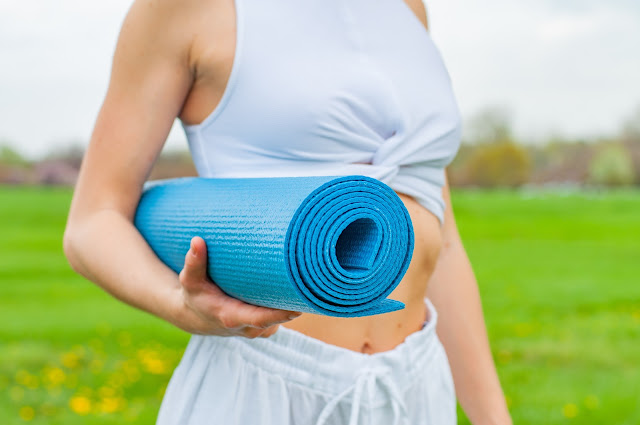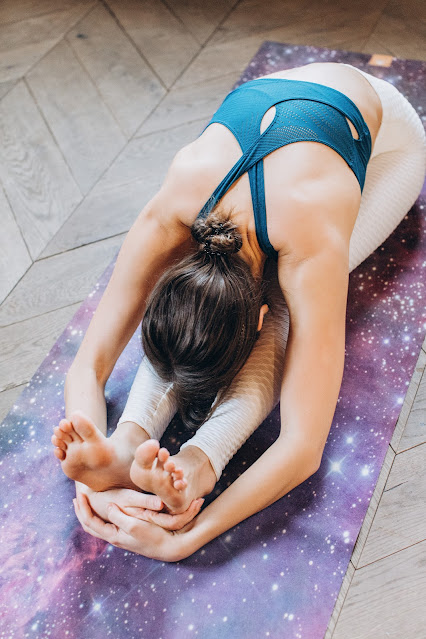The Ultimate Guide to Choosing and Using the Perfect Yoga Mat in 2023
Introduction
As the popularity of yoga continues to soar, finding the right yoga mat has become essential for practitioners of all levels. A good yoga mat not only provides comfort but also supports your practice and helps prevent injuries. In this comprehensive guide, we'll unveil the new formula for recognising a high-quality yoga mat and share tips on how to use it effectively to enhance your yoga journey in 2023.
Table of Contents :
1.Understanding the Importance of a Quality Yoga Mat
2.Key Factors to Consider When Choosing a Yoga
Mat Material and Eco-Friendliness
Thickness and Cushioning
Texture and Grip
Thickness and Cushioning
Texture and Grip
3.Using Your Yoga Mat: Step-by-Step Guide
Preparation and Placement
Alignment and Comfort
Maintaining Focus and Breath
Alignment and Comfort
Maintaining Focus and Breath
4.Yoga Mat Care and Maintenance
Cleaning and Hygiene
Storage and Longevity
Storage and Longevity
5.Elevating Your Yoga Practice with the Right Mat
Enhancing Balance and Stability
Supporting Different Types of Yoga
Minimising Impact and Joint Stress
Supporting Different Types of Yoga
Minimising Impact and Joint Stress
6.1. What is the optimal thickness for a yoga mat?
6.2. How do I choose the right texture for my yoga mat?
6.3. Are there specific mats for hot yoga or intense workouts?
6.4 Can I use a yoga towel with my mat?
6.5.What is the eco-friendliness of modern yoga mats?
6.2. How do I choose the right texture for my yoga mat?
6.3. Are there specific mats for hot yoga or intense workouts?
6.4 Can I use a yoga towel with my mat?
6.5.What is the eco-friendliness of modern yoga mats?
Understanding the Importance of a Quality Yoga Mat:
A high-quality yoga mat is a foundational tool for your practice. It provides a stable surface for poses, supports your joints, and offers a safe space for meditation and relaxation. Investing in a good yoga mat enhances your overall yoga experience and helps you reap the full benefits of your practice.
Key Factors to Consider When Choosing a Yoga Mat:
Material and Eco-Friendliness
Opt for mats made from natural and sustainable materials like rubber, cork, or Eco-friendly PVC alternatives. These options are not only better for the environment but also tend to be free from harmful chemicals.
Thickness and Cushioning
Choose a mat with adequate thickness to cushion your joints during poses. A mat that's too thin can lead to discomfort, while one that's too thick may compromise stability.
Texture and Grip
Look for a mat with a texture that suits your practice. A slightly textured surface provides better grip, preventing slipping during poses and transitions.
Using Your Yoga Mat: Step-by-Step Guide
Preparation and Placement
Roll out your mat on a flat and clean surface. Ensure that there's enough space around you to move comfortably. Align the top of your mat with a horizontal line to help maintain symmetry.
Alignment and Comfort
Position yourself at the centre of the mat, allowing equal space on both sides. Align your feet with the mat's edges during standing poses. Engage your core for stability and distribute your weight evenly.
Maintaining Focus and Breath
Throughout your practice, stay connected to your breath. Inhale and exhale deeply as you flow through poses. Use the mat's alignment markers, if present, to ensure proper placement of hands and feet.
Yoga Mat Care and Maintenance:
Cleaning and Hygiene
Regularly clean your mat to remove sweat, oils, and dirt. Use a gentle mat cleaner or a mixture of water and mild soap. Wipe it down after each session and allow it to air dry.
Storage and Longevity
Roll your mat with the top side facing out to prevent curling. Store it in a dry, cool place away from direct sunlight. Avoid folding the mat, as this can lead to creases.
Elevating Your Yoga Practice with the Right Mat
Enhancing Balance and Stability
A quality mat provides a stable surface, enhancing your balance and stability during standing, balancing, and inversion poses.
Supporting Different Types of Yoga
Choose a mat that suits your preferred style of yoga. For hot yoga, opt for a mat with extra grip and moisture-wicking properties. For gentle practices, prioritise cushioning and comfort.
Minimising Impact and Joint Stress
The cushioning of a good yoga mat helps absorb impact, reducing stress on your joints. This is especially important for poses that involve kneeling, sitting, or lying down.
FAQs: Unveiling the 2023 Yoga Mat Formula:
1.What is the optimal thickness for a yoga mat?
A thickness of around 5-mm provides a good balance of cushioning and stability for most practitioners.
2.How do I choose the right texture for my yoga mat?
2.How do I choose the right texture for my yoga mat?
Opt for a mat with a slightly textured surface for improved grip, especially if you tend to sweat during your practice.
3.Are there specific mats for hot yoga or intense workouts?
3.Are there specific mats for hot yoga or intense workouts?
Yes, there are mats designed specifically for hot yoga or intense workouts. Look for mats with moisture-wicking properties and enhanced grip.
4.Can I use a yoga towel with my mat?
4.Can I use a yoga towel with my mat?
Yes, a yoga towel can be placed over your mat to absorb sweat and improve grip during hot yoga or intense sessions.
5.What is the Eco-friendliness of modern yoga mats?
5.What is the Eco-friendliness of modern yoga mats?
Many modern yoga mats are made from sustainable and Eco-friendly materials to reduce their environmental impact.
Conclusion
Choosing and using the perfect yoga mat is an essential aspect of your practice. With the 2023 formula in mind, you can now recognize the key factors that make a yoga mat exceptional. By selecting a mat that aligns with your needs, maintaining it properly, and incorporating it effectively into your practice, you'll elevate your yoga experience and unlock the full potential of this ancient discipline.










